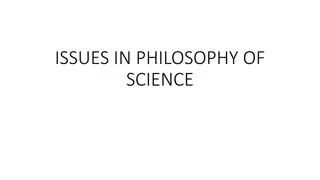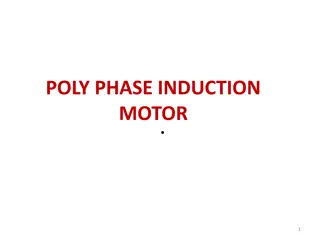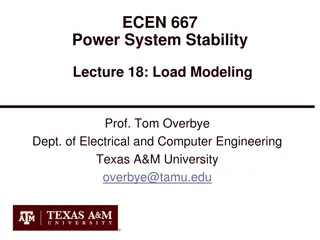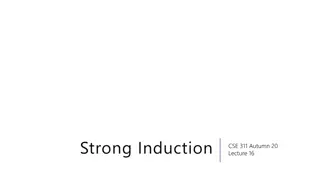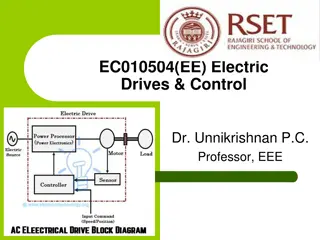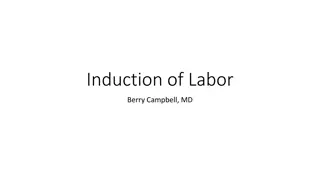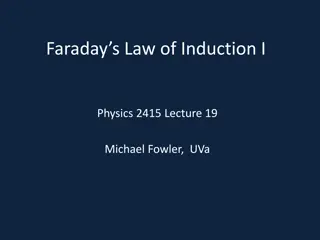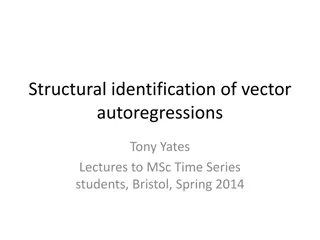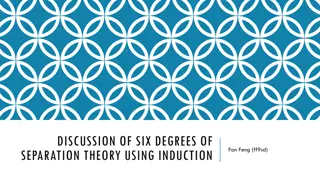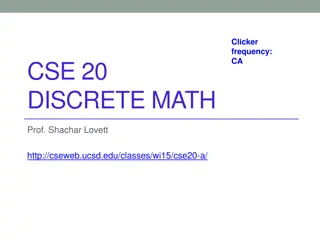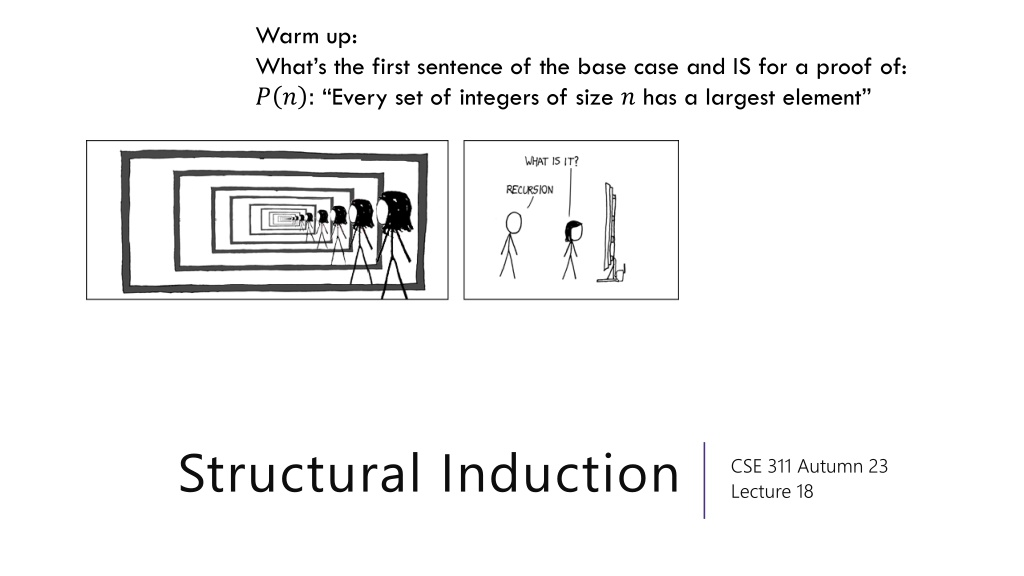
Recursive Definitions of Sets Explained
Explore the concept of recursive definitions of sets, including basis steps, recursive steps, and exclusion rules. Understand how to define sets such as natural numbers, integers, and more through recursion. Dive into examples and learn how to write recursive definitions for different sets.
Download Presentation

Please find below an Image/Link to download the presentation.
The content on the website is provided AS IS for your information and personal use only. It may not be sold, licensed, or shared on other websites without obtaining consent from the author. If you encounter any issues during the download, it is possible that the publisher has removed the file from their server.
You are allowed to download the files provided on this website for personal or commercial use, subject to the condition that they are used lawfully. All files are the property of their respective owners.
The content on the website is provided AS IS for your information and personal use only. It may not be sold, licensed, or shared on other websites without obtaining consent from the author.
E N D
Presentation Transcript
Warm up: What s the first sentence of the base case and IS for a proof of: ? ? : Every set of integers of size ?has a largest element Structural Induction CSE 311 Autumn 23 Lecture 18
Announcements Don t forget HW5 is due this Wednesday No new HW on Wednesday; we want you to study for the midterm! Friday is a university holiday! (Observance of Veteran s Day) No lecture on Friday Office Hours are more limited/on zoom (see the calendar) Wednesday at 10 PM. We ll have a few midterm review opportunities in class This Thursday s section will be mostly midterm review. The day of the midterm (Wed Nov 15), TAs will come to lecture to answer questions, but no official lecture (and no concept check released that day).
Induction Big Picture So far: We used induction to prove a statement over the natural numbers. Prove that P(n) holds for all natural numbers n. Next goal: In CS, we deal with Strings, Lists, Trees, and other recursively defined sets. Would like to prove statements over these sets. Prove that P(T) holds for all trees T. Prove that P(x) holds for all strings x.
Recursive Definition of Sets Define a set ? as follows: Basis Step: 0 ? Recursive Step: If ? ? then ? + 2 ?. Exclusion Rule: Every element of ? is in ? from the basis step (alone) or a finite number of recursive steps starting from a basis step. What is ??
Recursive Definitions of Sets We ll always list the Basis and Recursive parts of the definition. Starting now we re going to be lazy and skip writing the exclusion rule. It s still part of the definition.
Recursive Definitions of Sets All Natural Numbers Basis Step Basis Step: 0 ? Recursive Step Recursive Step: If ? ? then ? + 1 ?. All Integers Basis Step Basis Step: 0 ? Recursive Step Recursive Step: If ? ? then ? + 1 ? and ? 1 ?. Integer coordinates in the line ? = ? Basis Step Basis Step: (0,0) ? Recursive Step Recursive Step: If (?,?) ? then (? + 1,? + 1) ? and (? 1,? 1) ?.
Recursive Definitions of Sets Q1: What is this set? Basis Step Basis Step: 6 ?,15 ? Recursive Step Recursive Step: If ?,? ? then ? + ? ? Q2: Write a recursive definition for the set of powers of 3 {1,3,9,27, } Basis Step Basis Step: Recursive Step Recursive Step:
Structural Induction Every element is built up recursively So to show ?(?) for all ? ? Show ?(?) for all base case elements ?. Show for an arbitrary element not in the base case, if ?() holds for every named element in the recursive rule, then ?() holds for the new element (each recursive rule will be a case of this proof).
Structural Induction Example Let ? be: Basis: 6 S,15 ? Recursive: if ?,? ? then ? + ? ?. Show that every element of ? is divisible by 3.
Structural Induction Let ?(?) be "? is divisible by 3 We show ?(?) holds for all ? ? by structural induction. Base Cases: Inductive Hypothesis: Inductive Step: We conclude ? ? ? S by the principle of induction. Basis: 6 S,15 ? Recursive: if ?,? ? then ? + ? ?.
Structural Induction Let ?(?)be ? is divisible by 3 We show ?(?) holds for all ? ? by structural induction. Base Cases: 6 = 2 3 so 3|6, and ?(6) holds. 15 = 5 3, so3|15 and ?(15) holds. Let ? be an arbitrary element of ? not covered by the base cases. By the exclusion rule, ? = ? + ? for ?,? ?. Inductive Hypothesis: Suppose ?(?) and ?(?). Inductive Step: We conclude ? ? ? S by the principle of induction. Basis: 6 S,15 ? Recursive: if ?,? ? then ? + ? ?.
Structural Induction Let ?(?) be ? is divisible by 3 We show ?(?) holds for all ? ? by structural induction. Base Cases: 6 = 2 3 so 3|6, and ?(6) holds. 15 = 5 3, so3|15 and ?(15) holds. Let ? be an arbitrary element of ? not covered by the base cases. By the exclusion rule, ? = ? + ? for ?,? ?. Inductive Hypothesis: Suppose ?(?) and ?(?). Inductive Step: By IH 3 x and 3 y. So ? = 3? and ? = 3? for integers ?,?. Adding the equations, ? + ? = 3(? + ?). Since ?,? are integers, we have 3|(? + ?) by definition of divides. This gives ?(? + ?). We conclude ? ? ? S by the principle of induction.Basis: 6 S,15 ? Recursive: if ?,? ? then ? + ? ?.
Structural Induction Template 1. Define ?() Show that ?(?) holds for all ? ?. State your proof is by structural induction. 2. Base Case: Show ?(?) [Do that for every base cases ? in ?.] Let ? be an arbitrary element of ? not covered by the base cases. By the exclusion rule, ? =<recursive rules> 3. Inductive Hypothesis: Suppose ?(?) [Do that for every ? listed as in ? in the recursive rules.] 4. Inductive Step: Show ?() holds for ?. [You will need a separate case/step for every recursive rule.] 5. Therefore ? ? holds for all ? ? by the principle of induction.
Wait a minute! Why can we do this? S Basis: 6 S,15 ? Recursive: if ?,? ? then ? + ? ?. 6 15 We proved: We proved: Base Case: P(6) and P(15) IH IS: If P(x) and P(y), then P(x+y) 21 30 12 18 27 24
Weak Induction is a special case of Structural Basis: 0 Recursive: if ? then ? + 1 . 2 1 0 We proved: We proved: Base Case: P(0) IH IS: If P(k), then P(k+1) 4 5 3 6 7 8
Wait a minute! Why can we do this? Think of each element of ? as requiring ? applications of a rule to get in ?(???? ?????) is true ? ???? ????? ?(??? ???????????) so ?(??? ???????????) ? ??? ??????????? ?(??? ????????????) so ?(??? ????????????) It s the same principle as regular induction. You re just inducting on how many steps did we need to get this element? You re still only assuming the IH about a domino you ve knocked over.
Wait a minute! Why can we do this? Imagine building ? step-by-step ?0= {6,15} ?1= 12,21,30 ?2= {18,24,27,36,42,45,60} IS can always of the form suppose ? ? ? (?0 ??) and show ?(?) for some ? ??+1 We use the structural induction phrasing assuming our reader knows how induction works and so don t phrase it explicitly in this form.
Strings Why these recursive definitions? They re the basis for regular expressions, which we ll introduce next week. Answer questions like how do you search for anything that looks like an email address First, we need to talk about strings. will be an alphabet alphabet the set of all the letters you can use in words. is the set of all words words all the strings you can build off of the letters.
Strings ?is the empty string The string with 0 characters in Java (not null!) : Basis: ? . Recursive: If ? and ? then ?? ?? means the string of ? with the character ? appended. You ll also see ? ? (a to mean concatenate i.e. + in Java)
Functions on Strings Since strings are defined recursively, most functions on strings are as well. Length: len(?)=0; len(??)=len(?)+1 for ? , ? Reversal: ??= ?; ???= ??? for ? , ? Concatenation ? ? = ? for all ? ; ? ?? = ? ? ? for ? ,? Number of ? s in a string #?? = 0 #??? = #?? + 1 for ? ; #??? = #?(?) for ? ,? {?}.
Functions on Strings Since strings are defined recursively, most functions on strings are as well. Length: len(?)=0; len(??)=len(?)+1 for ? , ? Reversal: ??= ?; ???= ??? for ? , ? Concatenation ? ? = ? for all ? ; ? ?? = ? ? ? for ? ,? Number of ? s in a string #?? = 0 #??? = #?? + 1 for ? ; #??? = #?(?) for ? ,? {?}.
Claim for all ?,? len(xy)=len(x) + len(y). Let ?(?)be for all ? len(x y)=len(x) + len(y). Notice the strangeness of this ?()there is a for all ? inside the definition of ?(?). That means we ll have to introduce an arbitrary ? as part of the base case and the inductive step!
Claim for all ?,? len(xy)=len(x) + len(y). Define Let ?(?)be len(x y)=len(x) + len(y) for all ? . We prove ?(?) for all ? by structural induction. Base Case: Inductive Hypothesis: Inductive Step: len(?)=0; len(??)=len(?)+1 for ? , ? :Basis: ? . Recursive: If ? and ? then ??
Claim for all ?,? len(xy)=len(x) + len(y). Define Let ?(?)be len(x y)=len(x) + len(y) for all ? . We prove ?(?) for all ? by structural induction. Base Case: Let ? be an arbitrary string, len(? ?)=len(x) =len(x)+0=len(x)+len(?) Let ? be an arbitrary string not covered by the base case. By the exclusion rule, ? = ?? for a string ? and character ?. Inductive Hypothesis: Suppose ?(?) Inductive Step: Let ? be an arbitrary string. len(?)=0; len(??)=len(?)+1 for ? , ? :Basis: ? . Recursive: If ? and ? then ?? Therefore, len(xwa)=len(x) + len(wa)
Claim for all ?,? len(xy)=len(x) + len(y). Define Let ?(?)be len(x y)=len(x) + len(y) for all ? . We prove ?(?) for all ? by structural induction. Base Case: Let ? be an arbitrary string, len(? ?)=len(x) =len(x)+0=len(x)+len(?) Let ? be an arbitrary string not covered by the base case. By the exclusion rule, ? = ?? for a string ? and character ?. Inductive Hypothesis: Suppose ?(?) Inductive Step: Let ? be an arbitrary string. len(xy)=len(xwa) =len(xw)+1 (by definition of len) =len(x) + len(w) + 1 (by IH) =len(x) + len(wa) (by definition of len) Therefore, len(xy)=len(x) + len(y), as required. We conclude that ?(?) holds for all string ? by the principle of induction. Unwrapping the definition of ?, we get ? ? len(xy)=len(x)+len(y), as required.
More Structural Sets Binary Trees are another common source of structural induction. Basis: A single node is a rooted binary tree. Recursive Step: If ?1 and ?2are rooted binary trees with roots ?1 and ?2, then a tree rooted at a new node, with children ?1,?2 is a binary tree. ?1 ?2
Functions on Binary Trees size( )=1 size( ) = size(?1) + size(?2) + 1 ?1 ?2 height( ) = 0 height( ) = 1+max(height(?1),height(?2)) ?1 ?2
Structural Induction on Binary Trees For every rooted binary tree ?, size(?) 2 ??? ? ? +1 1 We ll show this next time.




